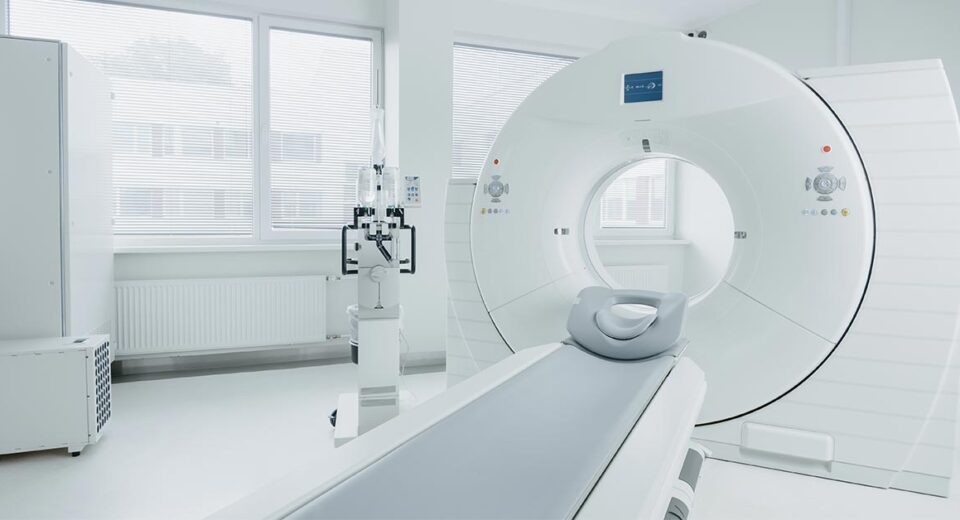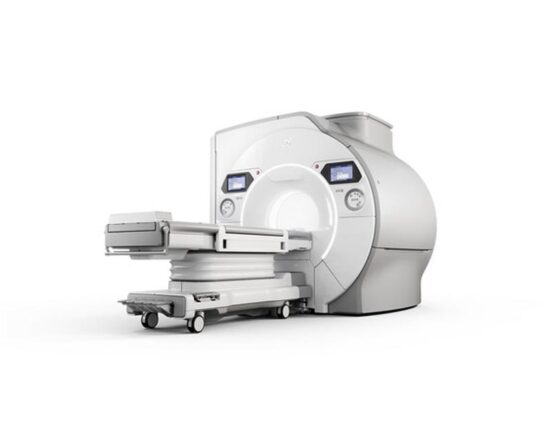What Is Medical Imaging – X-Ray, Ultrasound, CT, MRI & PET Scan?

This article is sponsored by:
AsiaMedic Wellness Assessment Centre
Medical imaging comprises various techniques to allow doctors to view the inside of the body, and find indications of a health condition, diagnose the condition, or to see how well a patient is responding to treatment. Learn more about these imaging technologies with our collection of informative articles and resources.
Guide To Medical Imaging: X-Ray, Ultrasound, CT Scan, MRI Scan And PET Scan
- August 1, 2024
- 266 Views
- Reading Time: 4 minutes
1.5T Versus 3T MRI Scan – What Are The Differences And Which Should You Choose?
- July 2, 2024
- 271 Views
- Reading Time: 3 minutes
MRI in Singapore – What Is It, And How Is It Different From a CT Scan?
- September 7, 2022
- 1046 Views
- Reading Time: 4 minutes
Topics
See A Doctor & Get A Medical Imaging Scan
If you are looking to get a medical imaging scan, you may wish to do so as part of a comprehensive health screening package, or approach a healthcare facility to undergo a specific scan (note: you will need a doctor’s referral letter for most cases until the scan is part of the national health screening initiatives).
Medical imaging scans from our partners you can consider:
Click the button below to schedule your scan!
The following list may help your search for a health screening doctor or a healthcare facility.
Healthcare Facilities With Medical Imaging Services
Advanced Medicine Imaging / Asia HealthPartners
Public Healthcare Facilities With Medical Imaging Services / NGOs
Breast Cancer Foundation (Mammogram)
National Healthcare Group Diagnostics
Financials
MediSave / MediShield + Government Subsidies For Medical Imaging
As of Jul 2024, outpatient scans for diagnosis or treatment of other medical conditions may be MediSave claimable up to $300 per year (Does not apply to plain x-rays or scans that are already claimable under other Medisave schemes such as scans for cancer treatment, chronic disease under the Chronic Disease Management Programme etc.)
For Outpatient CT, MRI, Ultrasound and other diagnostic scans in cancer patients:, it is claimable up to $600 per year.
According to the Ministry of Health, “the cost of magnetic resonance imaging scans depends on the type of scan. Patients requiring these scans can receive means-tested subsidies of up to 70 per cent at public specialist outpatient clinics. Pioneer and Merdeka Generation seniors also receive additional subsidies covering 50 per cent or 25 per cent off their remaining bill, respectively. Any bill amounts remaining after subsidies can be paid for using the annual MediSave limit of $300 for outpatient diagnostic scans.
Seniors aged 60 and above can withdraw an additional $300 annually from MediSave under the Flexi-MediSave scheme for these scans.”
Check with CPF on the latest MediSave policies.
Financial Planning For Cost Of Medical Treatment In Singapore
The cost of medical treatment in Singapore is a significant concern for many individuals and families. Proper financial planning is.
MediSave And Medishield Life Coverage For Overseas Singaporeans
Know more about MediSave, MediShield Life and Integrated Shield Plans coverage for overseas medical expenses.
Resources On Medical Imaging Scanners And Facilities
Is A 64 Slice CT Scan Sufficient? What Is “Slice” In CT Scan Terminology?
This article examines what is “slice” in CT scan terminology, and whether a 64 slice CT scan is sufficient.
AsiaMedic Partners With Sunway To Establish New Diagnostic Imaging Centre
Congratulations to our partner AsiaMedic, who announced strategic partnership with Sunway to establish a new diagnostic imaging centre.
Lifescan Medical Centre Singapore: One-Stop Screening & Imaging Centre
Health365 is proud to partner with Lifescan Medical Centre to offer our readers imaging tests and health screening packages.
AsiaMedic Sets New Standard in Healthcare with Installation of First SIGNA™ Hero 3.0T MRI Scanner in Asia-Pacific
AsiaMedic installs first-ever SIGNA™ Hero 3.0T MRI scanner in the Asia-Pacific region. AsiaMedic is a health screening partner for Health365.
Health Screening At Asia HealthPartners And Advanced Medicine Imaging
Health365 is proud to partner with Singapore Institute Of Advanced Medicine to offer our readers health screening packages in Singapore.
Health Screening At AsiaMedic Limited – Healthcare Provider In Singapore
Health365 is proud to partner with AsiaMedic Limited to offer packages for health screening at the AsiaMedic Wellness Assessment Centre.
FAQs
I am concerned about my health. Can I request for a medical imaging scan at a healthcare facility?
According to the MOH, for national health screening initiatives, a referral from a medical practitioner is not required. This is because healthcare facilities that wish to provide health screening for national programmes are first required by Health Promotion Board to have systems in place to ensure that patients receive timely follow-ups on the screening results from the appropriate medical practitioner(s). For any other health screening, a referral from a medical practitioner is required.
You should confirm with the healthcare provider if a referral is required for your desired scan.
Why is medical imaging important for health screening or early detection of diseases?
Many serious conditions are “silent” and do not present any symptoms in the early stages. Such diseases may require a variety of tests to be detected and diagnosed. Medical imaging is a vital component of the set of medical examinations needed.
Some health screening packages allow me a choice of 1 or 2 medical scans. Which one should I choose?
Different medical imaging scans help to detect different medical conditions. Generally, you can consider selecting those for conditions that you are most at risk for (e.g. family history of the condition or other risk factors).
You should consult the doctor to ascertain the choice that is most suitable for you.
Is radiation exposure from medical imaging scans harmful?
Certain examinations such as X-ray, CT scan, mammography, bone mineral densitometry, and PET scan will expose the patient to low doses of radiation. With current technology, radiation risk from medical imaging is sufficiently low to not cause harm.
Female patients who are pregnant, or for whom if pregnancy is a possibility, should inform the attending doctor, radiographer or nurse.
I am worried about the discomfort or radiation exposure from a mammogram. Can I take a breast ultrasound instead for breast cancer detection?
A mammogram uses x-rays and is currently the best screening tool for breast cancer detection. There are nonetheless limitations including the possibility of false negatives (i.e. cancer not detected), and false-positives (i.e. cancer is indicated when it is not present actually).
A breast ultrasound examination is usually used as an adjunct to mammography, rather than used as a replacement. A breast ultrasound is commonly used to further investigate an abnormality detected by a mammogram. Breast ultrasound is not typically used for breast cancer screening as it may miss some early signs of cancer. Some studies have shown that ultrasound may improve cancer detection in younger women or in women with dense breasts (which is common for Asian women).
Additional Resources
- Musculoskeletal Ultrasound | Lifescan Imaging. Available from: https://lifescanimaging.sg/services/musculoskeletal-ultrasound/
- The Importance of Breast Cancer Screening | Gleneagles Hospital. Available from: https://www.gleneagles.com.sg/health-plus/article/breast-cancer-screening-facts
- PET Scan | Cleveland Clinic. Available from: https://my.clevelandclinic.org/health/diagnostics/10123-pet-scan
- Positron Emission Tomography and Computed Tomography
(PET / CT Scan) | AsiaMedic. Available from: https://www.asiamedic.com.sg/medical-imaging/pet-ct-scan/ - Making prostate cancer cells shine | HealthXchange.sg. Available from: https://www.healthxchange.sg/news/making-prostate-cancer-cells-shine
- Lung PET Scan | Healthline. Available from: https://www.healthline.com/health/lung-pet-scan
- Computed Tomography (CT) Scan | Johns Hopkins Medicine. Available from: https://www.hopkinsmedicine.org/health/treatment-tests-and-therapies/computed-tomography-ct-scan
- Magnetic Resonance Imaging (MRI) | Lifescan Imaging. Available from: https://lifescanimaging.sg/services/magnetic-resonance-imaging/
- Magnetic Resonance Imaging
(MRI Scan) | AsiaMedic. Available from: https://www.asiamedic.com.sg/medical-imaging/mri-scan/ - Risks of Radiation | University Of California, SF. Available from: https://radiology.ucsf.edu/patient-care/patient-safety/radiation-safety/risks-of-radiation
Related Articles On Health365
- PET Scan For Alzheimer’s Disease Diagnosis
- What Is A PET Scan And What Is It Used For?
- Liver Health – FibroScan Cost In Singapore
- Health Screening For Heart Disease: CT Calcium Score
- Is Fear Of Radiation Risks From X-Rays And Other Diagnostic Imaging Scans Stopping You From Taking Vital Health Screenings?
- Health365 Guide To Cancer Doctors In Singapore


























